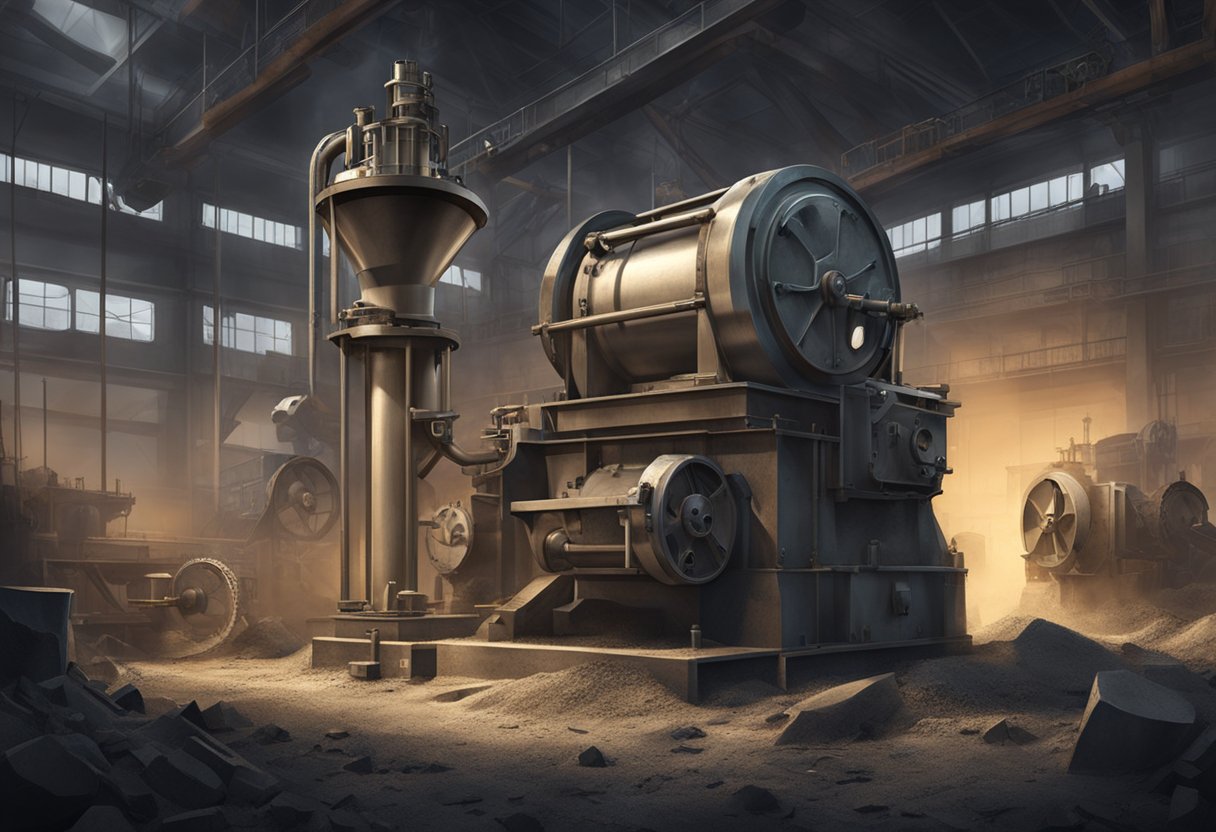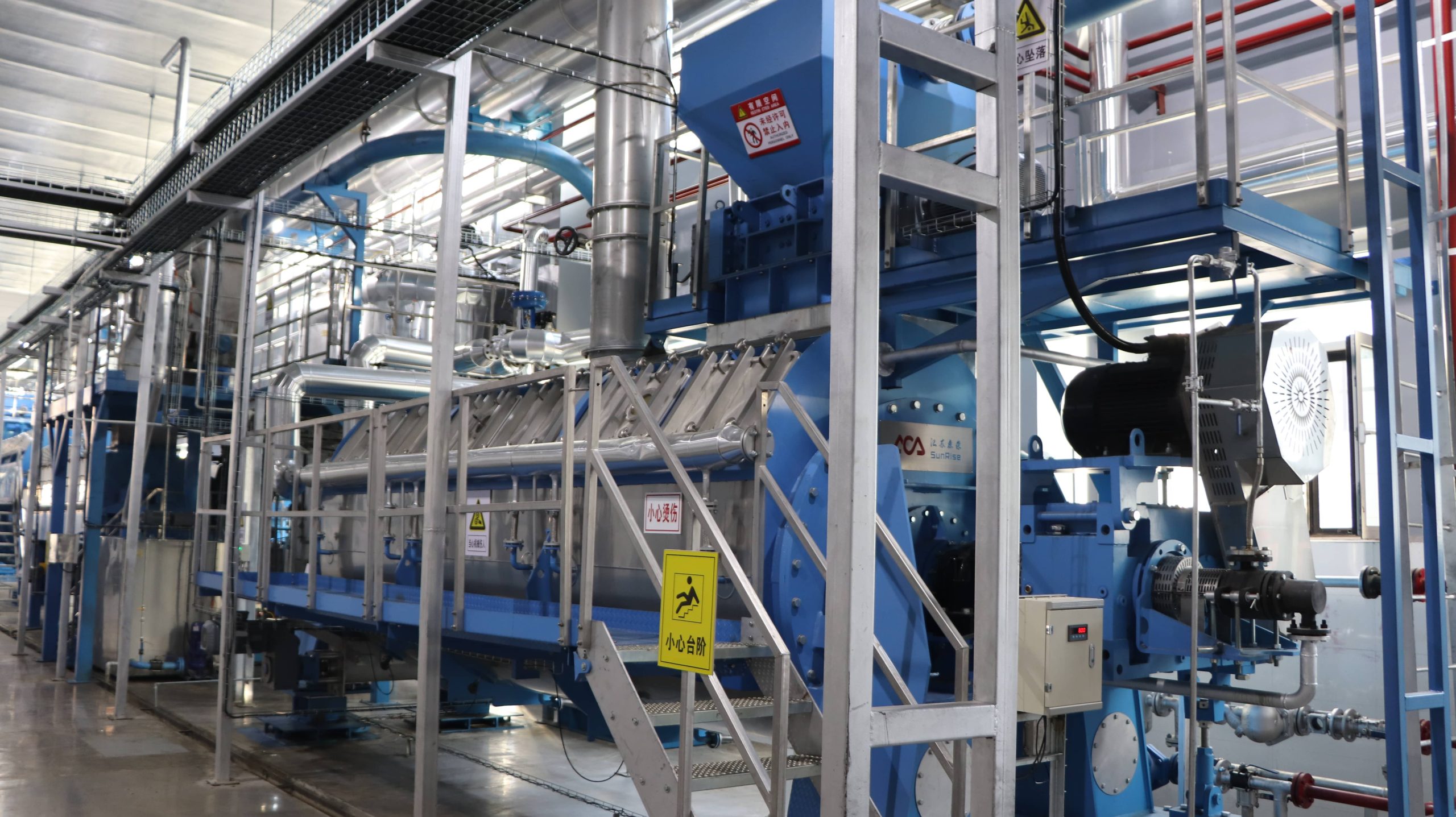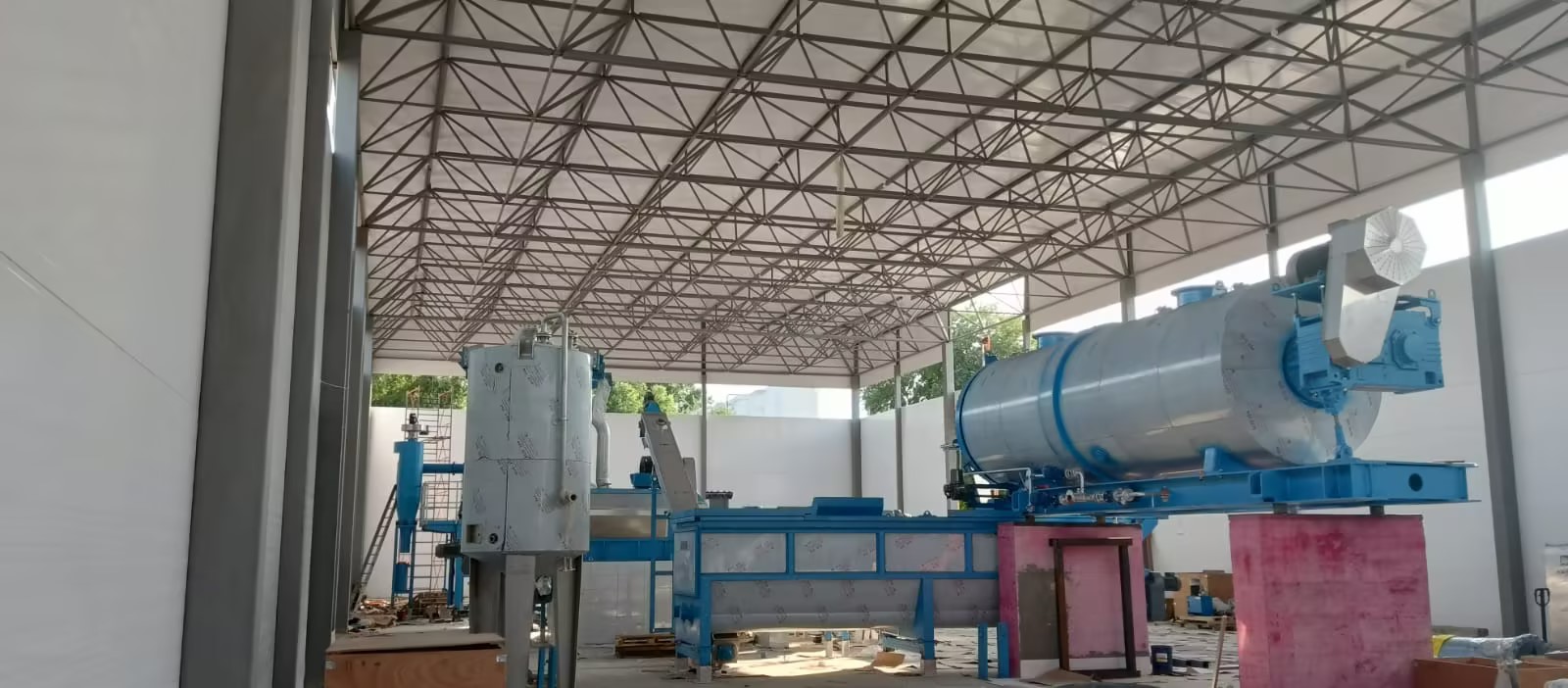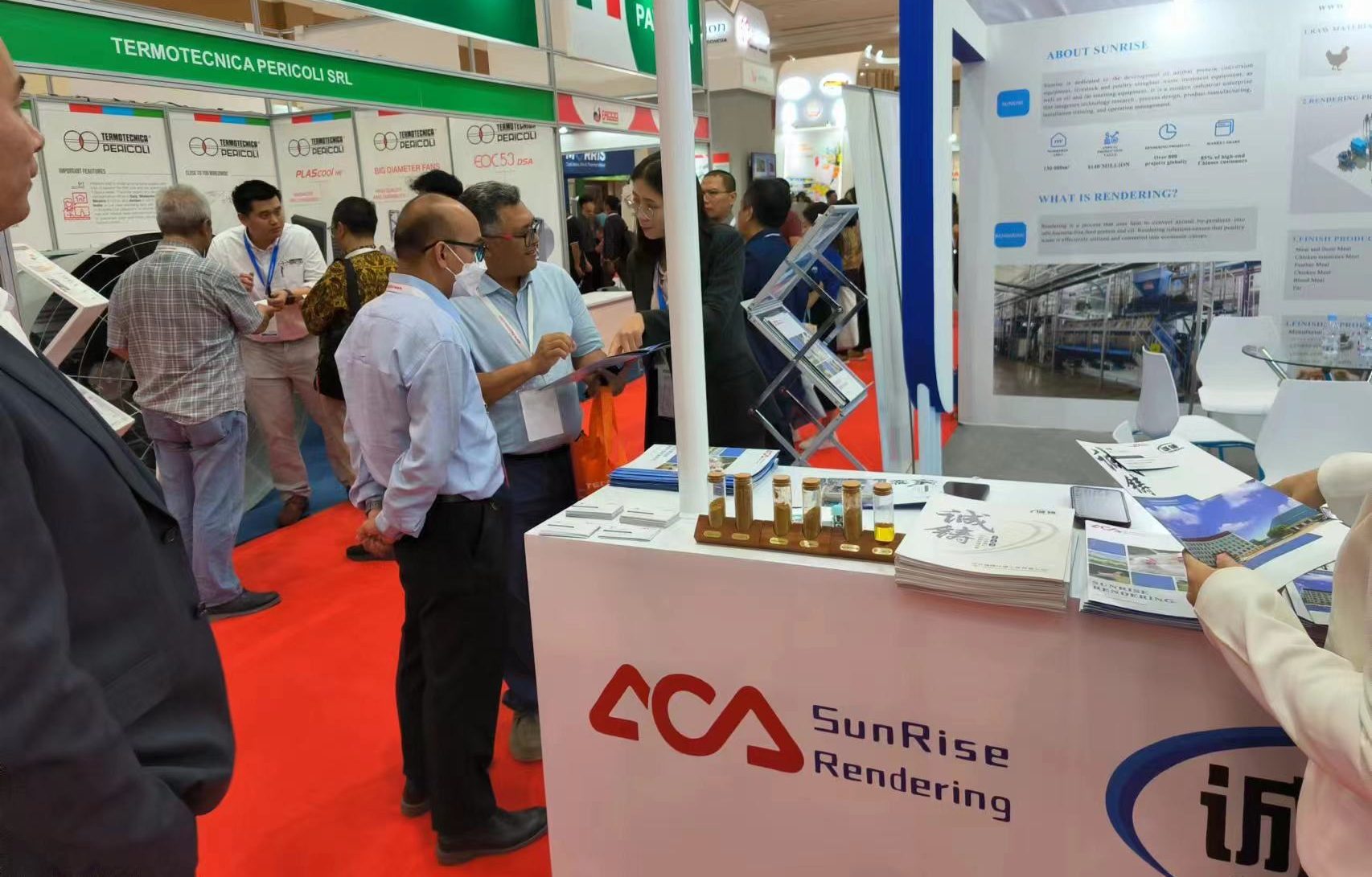
Triturador de Huesos: The Ultimate Bone Crusher for Efficient Waste Disposal
Triturador de Huesos: The Ultimate Bone Crusher for Efficient Waste Disposal
A triturador de huesos, also known as a bone crusher, is a machine used to crush animal bones into smaller pieces for various purposes. Historically, bone crushers were used by farmers to process animal bones to be used as fertilizer or to feed their livestock. However, modern bone crushers have a wide range of applications, including in the food industry, pharmaceuticals, and even in the creation of bone china.

The basic design of a triturador de huesos involves a set of rollers or blades that crush and grind the bones into small pieces. Some machines also have a vacuum system that removes any dust or debris created during the process. Depending on the intended use, the crushed bones can be further processed into powder or used as a source of calcium or phosphorus. In the food industry, bone crushers are used to create bone meal or bone broth, which can be used as a nutrient-rich additive in various products.
History of Bone Crushing

Bone crushing has been a practice for centuries, with evidence of its use dating back to ancient times. This section will explore the history of bone crushing, from ancient practices to modern developments.
Ancient Practices
In ancient times, bone crushing was used for a variety of purposes. In some cultures, it was used as a form of punishment, while others used it for medicinal purposes. For example, the ancient Greeks used bone crushing to create a powder that was believed to have healing properties.
In addition, bone crushing was also used for practical purposes such as making tools and weapons. The bones of animals such as deer and elk were crushed to create bone tools that were used for hunting and other tasks.
Modern Developments
In modern times, bone crushing has evolved into a more sophisticated process. The use of triturador de huesos, or bone crushers, has become more common in industries such as agriculture, food processing, and pharmaceuticals.
Bone crushers are machines that are used to crush animal bones into small pieces. This process is used to create bone meal, which is a valuable source of nutrients for plants and animals. In addition, bone meal is also used in the production of fertilizers and animal feed.
Overall, the history of bone crushing is a fascinating topic that highlights the ingenuity and resourcefulness of humans throughout history. From ancient practices to modern developments, bone crushing has played an important role in various aspects of human life.
Types of Bone Crushers
Manual Crushers
Manual bone crushers are operated by hand and are commonly used in small-scale operations. These crushers are often made of stainless steel and are designed to crush small bones into fine particles. They are ideal for crushing bones for use in animal feed or for making bone meal.
Electric Crushers
Electric bone crushers are powered by electricity and are designed to crush larger bones into smaller particles. These crushers are often used in medium to large-scale operations and are capable of processing large amounts of bone quickly and efficiently. Electric bone crushers come in a variety of sizes and styles to suit different needs and applications.
Industrial Grinders
Industrial bone grinders are heavy-duty machines that are designed to crush large amounts of bone quickly and efficiently. These machines are commonly used in large-scale operations such as meat processing plants and rendering facilities. Industrial bone grinders are typically powered by electricity or hydraulic systems and are capable of crushing large bones into fine particles in a matter of seconds.
Overall, the type of bone crusher used will depend on the size and scale of the operation, as well as the specific needs and requirements of the user. Whether manual, electric, or industrial, bone crushers are an essential tool for processing bones in a safe and efficient manner.
Anatomy of a Bone Crusher
Crushing Mechanism
The crushing mechanism of a bone crusher consists of a powerful set of blades that are designed to grind and crush bones into small pieces. The blades are made of high-quality stainless steel, which ensures that they are durable and able to withstand the pressure of crushing bones. The blades are also designed to be easily replaceable, which makes maintenance of the machine easy.
Motor and Power Supply
The motor and power supply of a bone crusher are critical components that determine the machine’s performance. The motor is typically a high-powered electric motor that provides the necessary torque to the blades to crush the bones. The power supply is usually a standard 110-volt AC power source that is compatible with most electrical outlets. The motor and power supply are usually housed in a sturdy metal casing that protects them from damage.
Safety Features
Safety features are an essential part of any bone crusher, and they are designed to protect the operator from harm. One of the most important safety features is an automatic shut-off switch that stops the machine if it detects any unusual vibrations or if the blades become jammed. Another safety feature is a protective shield that covers the blades, preventing accidental contact with the blades during operation. Additionally, some bone crushers also come with a safety interlock that prevents the machine from operating unless all the safety features are in place.
Overall, a bone crusher is a powerful and efficient machine that is designed to grind and crush bones into small pieces. With its robust construction, high-quality blades, and advanced safety features, a bone crusher is an essential tool for anyone who needs to process large quantities of bones quickly and efficiently.
Bone Crusher Applications
Food Industry
The bone crusher is widely used in the food industry for various purposes. One of the primary applications is in the production of animal feed. The machine is used to grind animal bones into small pieces that can be easily mixed with other ingredients to make animal feed. It is also used in the production of bone meal, which is a rich source of calcium and other minerals that are essential for animal health.
Pharmaceuticals
The bone crusher is also used in the pharmaceutical industry to produce various types of medicines and supplements. It is used to grind bones into a fine powder, which can be used as a source of calcium and other minerals. The powder is then mixed with other ingredients to produce tablets, capsules, and other forms of medication.
Agriculture
The bone crusher is widely used in the agriculture industry for various purposes. One of the primary applications is in the production of fertilizers. The machine is used to grind animal bones into a fine powder, which is then mixed with other ingredients to produce organic fertilizers. The bone meal is a rich source of phosphorus, nitrogen, and other minerals that are essential for plant growth.
Overall, the bone crusher is a versatile machine that has a wide range of applications in various industries. It is an essential tool for grinding animal bones into small pieces that can be used for various purposes. The machine is easy to use and maintain, and it is a cost-effective solution for many industries.
Operating a Bone Crusher
Preparation and Safety
Before operating a bone crusher, it is essential to ensure that all safety measures are in place. The operator must wear protective gear, including gloves, goggles, and a face mask, to avoid any injuries. The machine must be placed on a stable surface, and all loose clothing or jewelry must be removed before starting the operation.
Step-by-Step Usage
To operate a bone crusher, the operator must follow the manufacturer’s instructions carefully. First, the bones must be prepared by removing any flesh or meat. Once the bones are ready, they can be placed into the machine’s hopper. The operator must ensure that the bones are fed into the crusher slowly to prevent any jamming or overloading.
After the bones are crushed, the operator must check the consistency of the bone meal. If the texture is not uniform, the bones may need to be crushed again. Once the bone meal is ready, it can be collected and stored in a clean, dry container.
Cleaning and Maintenance
To ensure the longevity and efficiency of a bone crusher, it must be regularly cleaned and maintained. The operator must follow the manufacturer’s instructions for cleaning the machine thoroughly after each use. Any leftover bone fragments or debris must be removed to prevent any contamination.
Additionally, the machine’s blades and motor must be inspected regularly to ensure that they are functioning correctly. Any signs of wear and tear must be addressed immediately to prevent any damage to the machine.
In conclusion, operating a bone crusher requires careful attention to safety, following the manufacturer’s instructions, and regular cleaning and maintenance. With proper usage and maintenance, a bone crusher can be a valuable tool for processing bones into bone meal.
Technical Specifications
Capacity and Throughput
The triturador de huesos is a powerful bone crusher designed to handle large volumes of bones efficiently. With a maximum capacity of 500 pounds per hour, this machine can easily handle the demands of a busy slaughterhouse or meat processing plant.
Size and Portability
Despite its impressive capacity, the triturador de huesos is surprisingly compact and easy to move. Measuring just 24 inches wide by 36 inches long and 48 inches tall, this machine can be easily transported from one location to another. Its sturdy wheels and lightweight design make it easy to move around even in tight spaces.
Energy Efficiency
The triturador de huesos is designed to be energy efficient, with a powerful motor that uses minimal electricity. With a power consumption of just 5 amps, this machine is an excellent choice for businesses looking to reduce their energy costs while maintaining high levels of productivity.
Overall, the triturador de huesos is an excellent choice for businesses looking for a reliable and efficient bone crusher. Its impressive capacity, compact size, and energy efficiency make it a top choice for meat processing plants and slaughterhouses around the world.
Choosing the Right Bone Crusher
Assessing Needs
Before purchasing a bone crusher, it is important to assess the needs of the facility. Consider the amount of bone waste that is produced on a regular basis, as well as the size and type of bones that need to be crushed. A smaller facility may only require a manual or semi-automatic bone crusher, while a larger facility may need a fully automatic machine.
Budget Considerations
Budget is another important factor to consider when choosing a bone crusher. Manual or semi-automatic machines are typically less expensive than fully automatic machines, but may require more labor to operate. It is important to consider the long-term costs of maintenance and repairs when making a budget decision.
Vendor Comparison
When comparing vendors, it is important to look for a reputable company with a track record of providing quality bone crushers. Consider the warranty and customer service that each vendor provides, as well as the availability of replacement parts. It may also be helpful to read reviews from other customers to get an idea of their experiences with the vendor and their products.
Overall, choosing the right bone crusher requires careful consideration of the facility’s needs, budget, and vendor options. By taking the time to assess these factors, facilities can ensure that they purchase a bone crusher that will meet their needs and provide reliable, long-term performance.
Regulations and Compliance
Health and Safety Standards
When it comes to the use of triturador de huesos, there are various health and safety standards that must be adhered to. These standards are put in place to ensure the safety of the workers and the general public. The use of this equipment can be dangerous if not handled properly. As such, it is important to ensure that all workers are trained on the proper use of the equipment and that all safety precautions are taken.
Environmental Impact
The use of triturador de huesos can have an impact on the environment. As such, it is important to ensure that the equipment is used in a responsible manner. This includes ensuring that all waste is disposed of properly and that the equipment is not causing any harm to the environment. It is also important to ensure that the equipment is not causing any noise pollution that may disturb the surrounding community.
Certification Requirements
In order to ensure that the equipment is being used in a safe and responsible manner, there are various certification requirements that must be met. These requirements vary depending on the location and intended use of the equipment. It is important to ensure that all certifications are up to date and that the equipment is being used in accordance with the guidelines set forth by the regulating bodies.
Overall, it is important to ensure that all regulations and compliance standards are being met when using triturador de huesos. This will not only ensure the safety of the workers and the general public but will also help to minimize any negative impact on the environment.
Innovations in Bone Crushing Technology
Automation Advances
The use of automated systems in bone crushing technology has revolutionized the industry. With the help of advanced sensors and computer algorithms, the triturador de huesos can now operate with greater precision and efficiency. The automated systems can adjust the crushing force and speed based on the type and size of the bones being crushed. This has not only increased the speed of the process but has also reduced the risk of damage to the equipment and the bones.
Noise Reduction Techniques
Bone crushing can be a noisy and unpleasant process. However, with the use of noise reduction techniques, the noise levels can be significantly reduced. The latest triturador de huesos models come equipped with sound insulation materials and noise-absorbing technologies that can reduce the noise levels by up to 50%. This not only improves the working conditions for the operators but also reduces the impact on the surrounding environment.
Sustainability Efforts
The bone crushing industry has taken steps to reduce its impact on the environment. Many manufacturers now use eco-friendly materials in the construction of the triturador de huesos. Additionally, some models are designed to consume less energy and water, reducing their carbon footprint. The industry has also started recycling bone waste, which can be used as a source of calcium and other minerals. These sustainability efforts not only benefit the environment but also help the industry to reduce costs and increase efficiency.
In conclusion, the innovations in bone crushing technology have transformed the industry. With the use of automation, noise reduction techniques, and sustainability efforts, the triturador de huesos has become more efficient, eco-friendly, and cost-effective. These advancements have not only improved the working conditions for the operators but have also reduced the impact on the environment.
Troubleshooting Common Issues
Jamming or Blockage
One of the most common issues with a bone crusher is jamming or blockage. This can be caused by bones getting stuck in the grinding chamber or by foreign objects entering the machine. If this happens, the machine may stop working or produce unusual noises.
To troubleshoot this issue, turn off the machine and unplug it. Remove any bones or foreign objects that may be blocking the grinding chamber. If the machine still does not work, check the blades for damage or dullness. Replace the blades if necessary.
Wear and Tear
Over time, a bone crusher may experience wear and tear, which can cause issues such as decreased efficiency, increased noise, and even complete failure. This can be caused by factors such as frequent use, improper maintenance, or poor quality materials.
To troubleshoot this issue, inspect the machine for signs of wear and tear, such as cracks, rust, or loose parts. Replace any damaged or worn parts, and perform regular maintenance to prevent further damage.
Electrical Problems
Another common issue with a bone crusher is electrical problems. This can be caused by factors such as power surges, loose connections, or faulty wiring. If the machine does not turn on or produces unusual noises or smells, it may be experiencing electrical issues.
To troubleshoot this issue, check the power source and connections to ensure they are secure and functioning properly. If the issue persists, contact a professional electrician or the manufacturer for assistance. Do not attempt to repair electrical issues yourself, as this can be dangerous and cause further damage to the machine.
Future of Bone Crushing
Research and Development
As technology continues to advance, the future of bone crushing looks promising. Researchers are constantly working to improve the efficiency and effectiveness of bone crushers. They are exploring new materials and designs that can handle a wider range of bone types and sizes. Additionally, they are testing new methods of bone crushing that minimize the amount of dust and debris produced during the process.
Market Trends
The demand for bone crushers is expected to increase in the coming years. This is due to the growing need for bone meal in the agricultural industry. As more farmers turn to organic farming methods, the demand for bone meal as a natural fertilizer is expected to rise. Additionally, the pet food industry is also a major consumer of bone meal. As more pet owners become aware of the benefits of feeding their pets a natural diet, the demand for bone crushers is expected to increase.
Potential Advances
One potential advance in bone crushing technology is the use of artificial intelligence (AI). By incorporating AI into bone crushers, manufacturers can improve the accuracy and precision of the machines. This can lead to faster and more efficient bone crushing, reducing the amount of time and resources needed to produce bone meal.
Another potential advance is the use of 3D printing technology. By printing bone crushers using specialized materials, manufacturers can create machines that are more durable and efficient. Additionally, 3D printing allows for greater customization, allowing manufacturers to create bone crushers that are tailored to the specific needs of their customers.
Overall, the future of bone crushing looks bright. With continued research and development, as well as advances in technology, bone crushers are poised to become even more efficient and effective in the years to come.



